Ielts academic Reading 66
A Students who want to enter the University of Montreal's Athletic Complex need more than just a conventional ID card - their identities must be authenticated by an electronic hand scanner. In some California housing estates, a key alone is insufficient to get someone in the door; his or her /Voiceprinfmust also be verified. And soon, customers at some Japanese banks will have to present their faces for scanning before they can enter the building and withdraw their money.
B All of these are applications of biometrics, a little-known but fast-growing technology that involves the use of physical or biological characteristics to identify individuals. In use for more than a decade at some highsecurity government institutions in the United States and Canada, biometrics are now rapidly popping up in the everyctay world. Already, more than 10,000 facilities, from prisons to day-care centres, monitor people's fingerprints or other physical parts to ensure that they are who they claim to be. Some 60 biometric companies around the world pulled in at least $22 million last year and that grand total is expected to mushroom to at least $50 million by 1999.
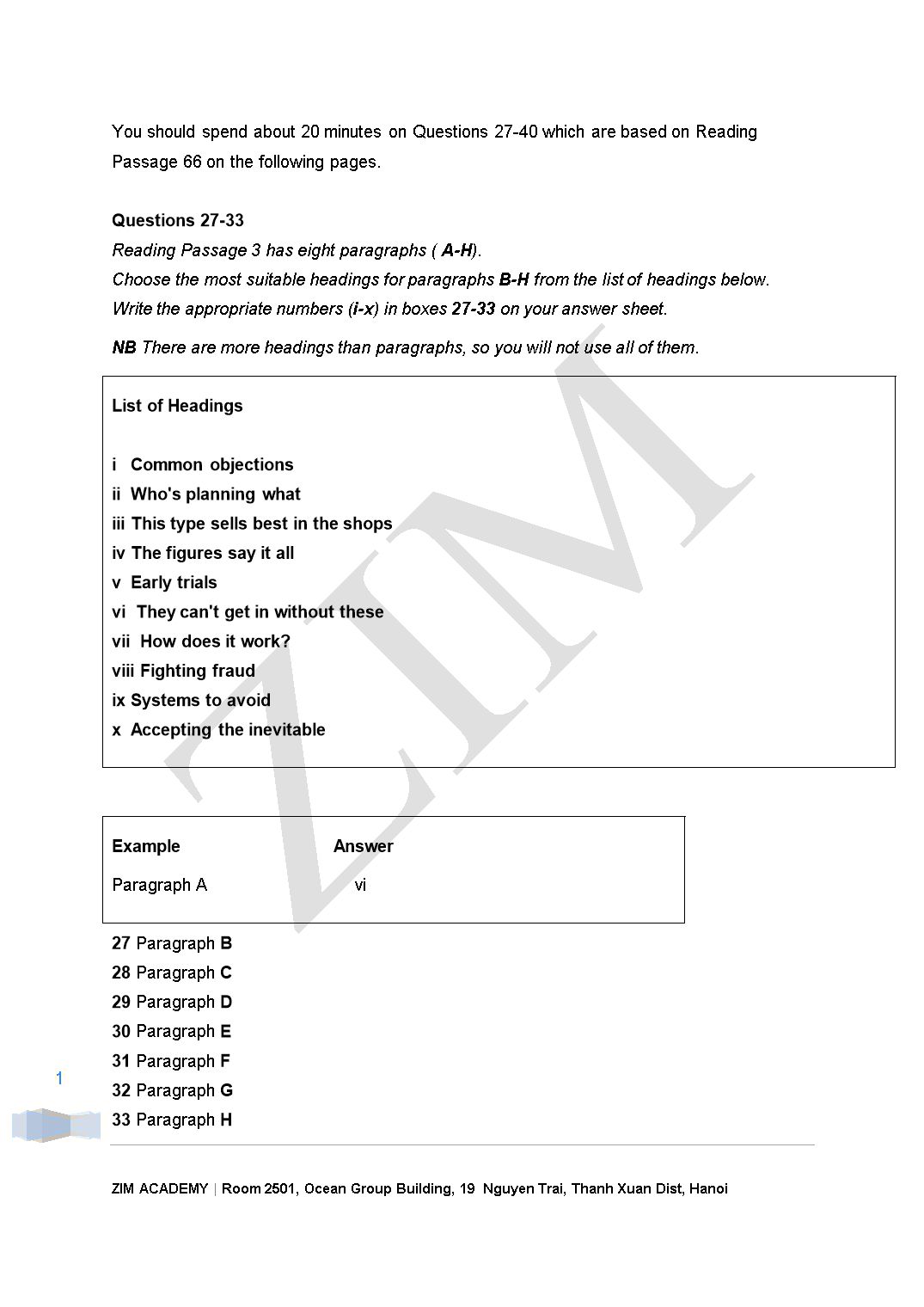
Trang 1
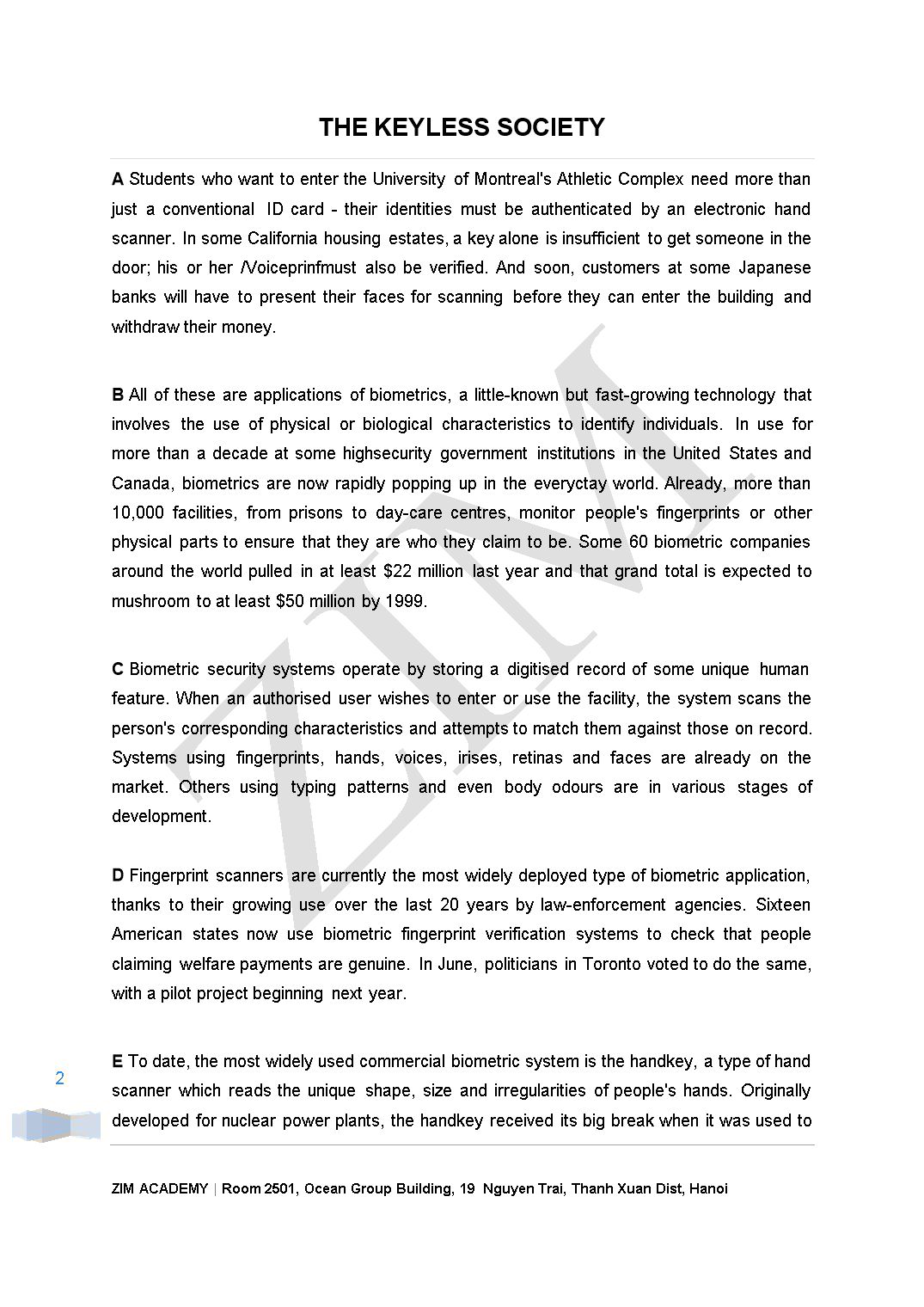
Trang 2
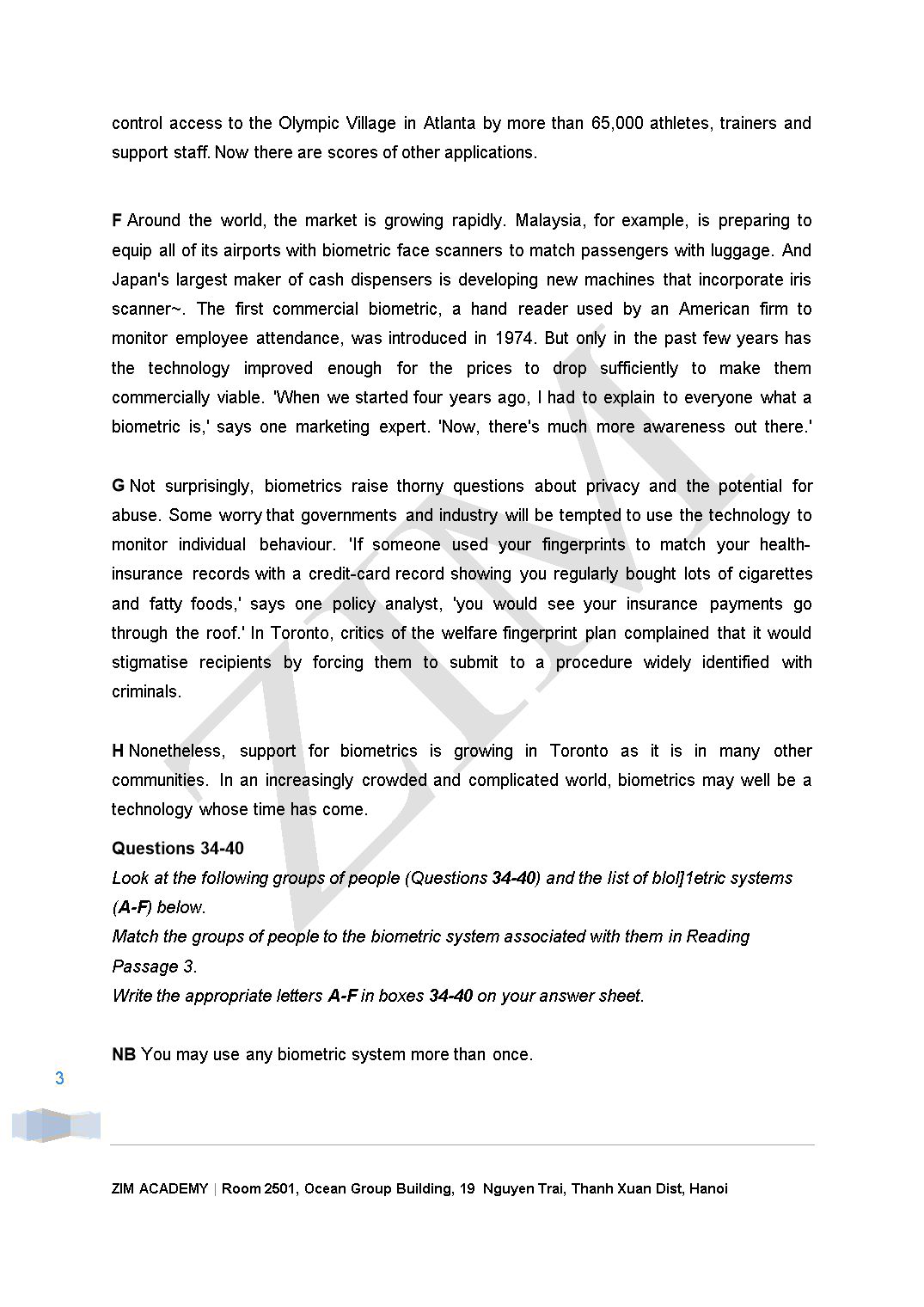
Trang 3

Trang 4
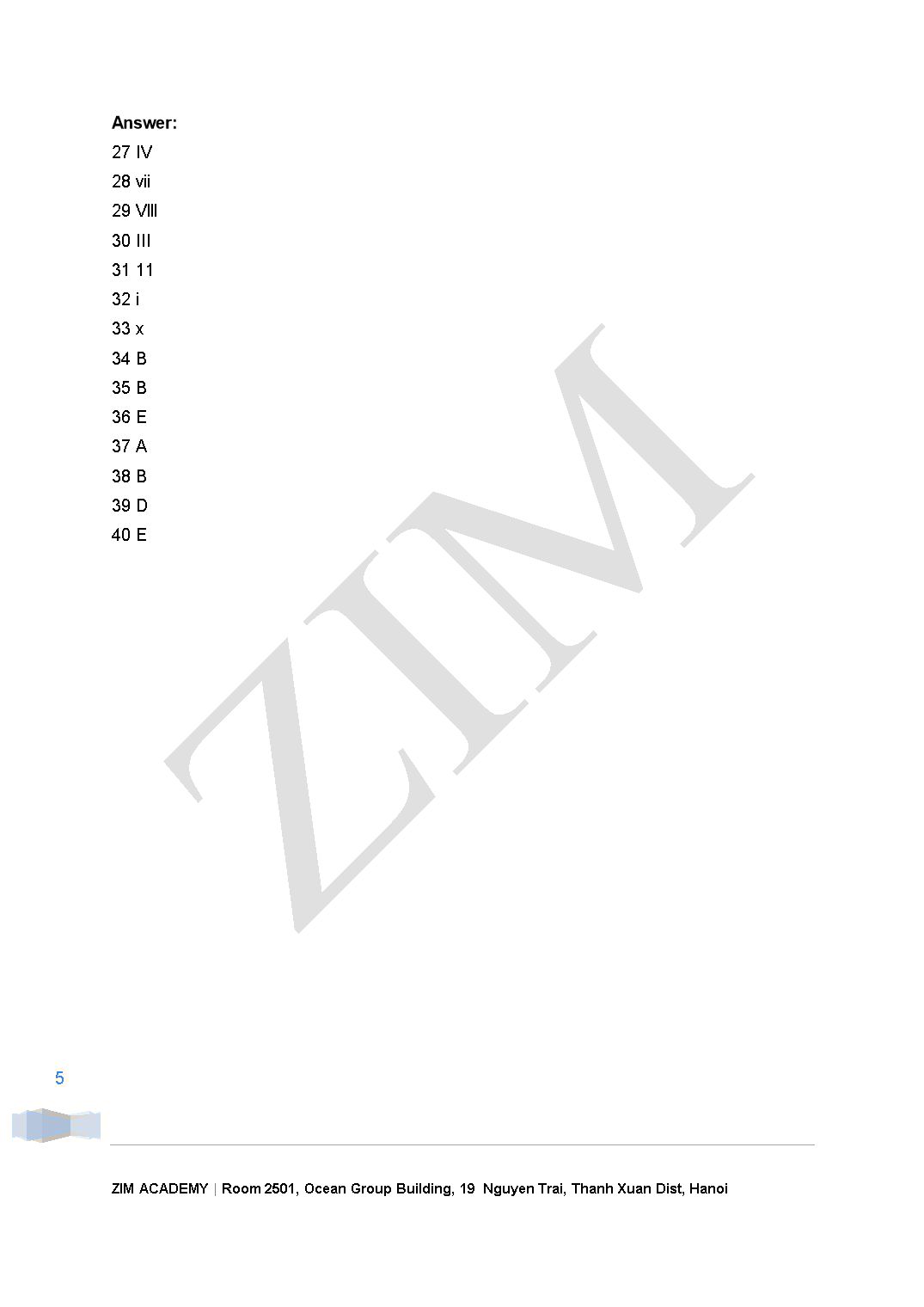
Trang 5
Tóm tắt nội dung tài liệu: Ielts academic Reading 66
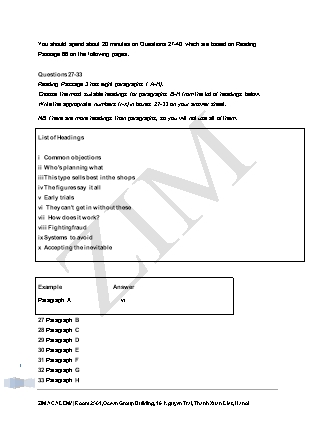
You should spend about 20 minutes on Questions 27-40 which are based on Reading Passage 66 on the following pages. Questions 27-33 Reading Passage 3 has eight paragraphs ( A-H). Choose the most suitable headings for paragraphs B-H from the list of headings below. Write the appropriate numbers (i-x) in boxes 27-33 on your answer sheet. NB There are more headings than paragraphs, so you will not use all of them. List of Headings i Common objections ii Who's planning what iii This type sells best in the shops iv The figures say it all v Early trials vi They can't get in without these vii How does it work? viii Fighting fraud ix Systems to avoid x Accepting the inevitable Example Answer Paragraph A vi 27 Paragraph B 28 Paragraph C 29 Paragraph D 30 Paragraph E 31 Paragraph F 32 Paragraph G 33 Paragraph H THE KEYLESS SOCIETY A Students who want to enter the University of Montreal's Athletic Complex need more than just a conventional ID card - their identities must be authenticated by an electronic hand scanner. In some California housing estates, a key alone is insufficient to get someone in the door; his or her /Voiceprinfmust also be verified. And soon, customers at some Japanese banks will have to present their faces for scanning before they can enter the building and withdraw their money. B All of these are applications of biometrics, a little-known but fast-growing technology that involves the use of physical or biological characteristics to identify individuals. In use for more than a decade at some highsecurity government institutions in the United States and Canada, biometrics are now rapidly popping up in the everyctay world. Already, more than 10,000 facilities, from prisons to day-care centres, monitor people's fingerprints or other physical parts to ensure that they are who they claim to be. Some 60 biometric companies around the world pulled in at least $22 million last year and that grand total is expected to mushroom to at least $50 million by 1999. C Biometric security systems operate by storing a digitised record of some unique human feature. When an authorised user wishes to enter or use the facility, the system scans the person's corresponding characteristics and attempts to match them against those on record. Systems using fingerprints, hands, voices, irises, retinas and faces are already on the market. Others using typing patterns and even body odours are in various stages of development. D Fingerprint scanners are currently the most widely deployed type of biometric application, thanks to their growing use over the last 20 years by law-enforcement agencies. Sixteen American states now use biometric fingerprint verification systems to check that people claiming welfare payments are genuine. In June, politicians in Toronto voted to do the same, with a pilot project beginning next year. E To date, the most widely used commercial biometric system is the handkey, a type of hand scanner which reads the unique shape, size and irregularities of people's hands. Originally developed for nuclear power plants, the handkey received its big break when it was used to control access to the Olympic Village in Atlanta by more than 65,000 athletes, trainers and support staff. Now there are scores of other applications. F Around the world, the market is growing rapidly. Malaysia, for example, is preparing to equip all of its airports with biometric face scanners to match passengers with luggage. And Japan's largest maker of cash dispensers is developing new machines that incorporate iris scanner~. The first commercial biometric, a hand reader used by an American firm to monitor employee attendance, was introduced in 1974. But only in the past few years has the technology improved enough for the prices to drop sufficiently to make them commercially viable. 'When we started four years ago, I had to explain to everyone what a biometric is,' says one marketing expert. 'Now, there's much more awareness out there.' G Not surprisingly, biometrics raise thorny questions about privacy and the potential for abuse. Some worry that governments and industry will be tempted to use the technology to monitor individual behaviour. 'If someone used your fingerprints to match your health-insurance records with a credit-card record showing you regularly bought lots of cigarettes and fatty foods,' says one policy analyst, 'you would see your insurance payments go through the roof.' In Toronto, critics of the welfare fingerprint plan complained that it would stigmatise recipients by forcing them to submit to a procedure widely identified with criminals. H Nonetheless, support for biometrics is growing in Toronto as it is in many other communities. In an increasingly crowded and complicated world, biometrics may well be a technology whose time has come. Questions 34-40 Look at the following groups of people (Questions 34-40) and the list of blol]1etric systems (A-F) below. Match the groups of people to the biometric system associated with them in Reading Passage 3. Write the appropriate letters A-F in boxes 34-40 on your answer sheet. NB You may use any biometric system more than once. 34 sports students 35 Olympic athletes 36 airline passengers 37 welfare claimants 38 business employees 39 home owners 40 bank customers Answer: 27 IV 28 vii 29 Vlll 30 III 31 11 32 i 33 x 34 B 35 B 36 E 37 A 38 B 39 D 40 E
File đính kèm:
 ielts_academic_reading_66.doc
ielts_academic_reading_66.doc

